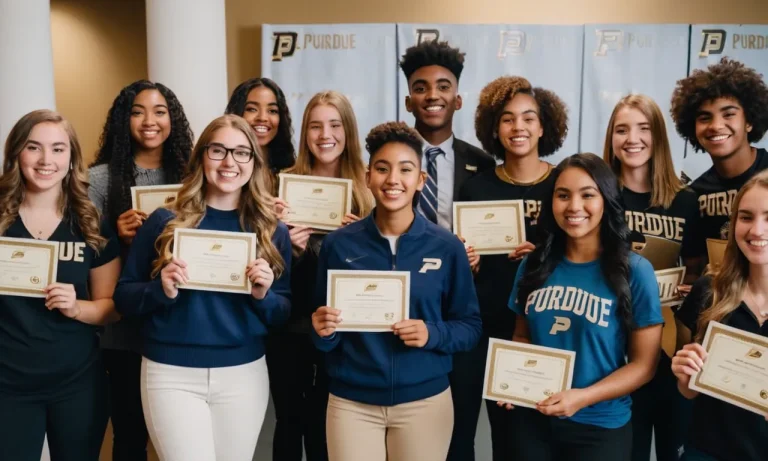Navigating the high school years can be a daunting task, with a myriad of classes, extracurricular activities, and social obligations vying for your attention. One of the most pressing questions that often arises is: How many classes do you have in high school?
If you’re short on time, here’s a quick answer to your question: The number of classes you’ll have in high school typically ranges from 6 to 8 per semester or trimester, depending on your school’s schedule and graduation requirements. However, this is just the tip of the iceberg.
In this comprehensive guide, we’ll delve deeper into the intricacies of high school class schedules, explore the factors that influence the number of classes, and provide valuable insights to help you make the most of your academic journey.
We’ll cover essential topics such as core curriculum requirements, elective options, advanced placement (AP) and honors courses, and how these elements shape your overall class load. Additionally, we’ll discuss strategies for balancing your academic workload with extracurricular activities, ensuring a well-rounded high school experience.
Whether you’re a current high school student, a parent, or simply curious about the educational landscape, this article will equip you with the knowledge you need to navigate the complexities of high school class schedules.
Understanding High School Scheduling Systems
As students embark on their high school journey, it’s crucial to understand the different scheduling systems that schools employ. The way classes are organized can significantly impact the academic experience and workload.
From the traditional semester system to innovative hybrid schedules, let’s dive into the various options:
Traditional Semester System
The semester system is a classic approach that divides the academic year into two terms: fall and spring semesters. In this system, students typically take six or seven classes per semester, with each class meeting daily or every other day.
This scheduling method offers a balanced workload and allows students to explore a diverse range of subjects. According to National Center for Education Statistics, approximately 68% of public high schools in the U.S. follow the semester system.
Trimester System
The trimester system divides the academic year into three terms, each lasting approximately 12 weeks. Students take fewer classes at a time, often five or six, but complete them more quickly. This system allows for more focused learning and can be beneficial for students who prefer a more intense but shorter course load.
While less common than the semester system, the trimester approach is gaining popularity, with around 10% of high schools adopting it, according to Education Week.
Block Scheduling
Block scheduling is an alternative approach that organizes classes into longer periods, typically 90 minutes or more. Students take fewer classes per day but cover more material in each session. There are two main types of block scheduling:
- 4×4 Block: Students take four classes per semester, each meeting daily for an extended period.
- A/B Block: Students have eight classes, with four classes meeting on “A” days and the other four on “B” days, alternating throughout the week.
Block scheduling allows for more in-depth exploration of subjects and can reduce student stress by minimizing the number of classes to juggle simultaneously. According to Education Week, around 30% of U.S. high schools have adopted some form of block scheduling.
Hybrid Schedules
Some schools opt for hybrid schedules that combine elements of different systems. For example, they might follow a semester system but incorporate block scheduling for certain subjects or grade levels.
These hybrid approaches aim to provide flexibility and cater to the diverse needs of students and faculty. While less common, hybrid schedules can be tailored to the specific goals and resources of each school.
Whichever scheduling system a high school follows, it’s essential for students and families to understand the implications for course load, pacing, and overall academic experience. Don’t hesitate to reach out to your school’s counselors or administrators for guidance on navigating the scheduling system and making the most of your high school years!
😊
Core Curriculum Requirements
High school is a pivotal time in a student’s academic journey, laying the foundation for future endeavors. At the heart of the high school curriculum lie the core subjects, which serve as the bedrock for a well-rounded education.
These subjects are designed to equip students with essential knowledge and skills, preparing them for college, careers, and life beyond the classroom. Let’s delve into the core curriculum requirements that shape the high school experience.
English/Language Arts
The study of English and Language Arts is a cornerstone of the high school curriculum. This subject focuses on developing strong communication skills, both written and verbal. Students explore literature, composition, grammar, and rhetoric, honing their ability to analyze texts, craft persuasive arguments, and express themselves effectively.
According to Education Week, proficiency in English/Language Arts is crucial for success in college and careers, with 89% of high school graduates believing these skills are essential.
Mathematics
Mathematics is a fundamental component of the high school curriculum, equipping students with the analytical and problem-solving skills necessary for success in a wide range of fields. From algebra and geometry to calculus and statistics, the math curriculum builds a solid foundation in quantitative reasoning, logical thinking, and data analysis.
The National Center for Education Statistics reports that in 2019, 71% of high school graduates took Algebra II or higher-level math courses, underscoring the importance of this subject.
Science
The study of science is an essential part of the high school curriculum, fostering curiosity, critical thinking, and an understanding of the natural world. Students explore various disciplines, including biology, chemistry, physics, and earth science, through a combination of theoretical knowledge and hands-on experiments.
According to National Science Teaching Association, a strong science education prepares students for future careers in STEM fields and equips them with the skills to make informed decisions as global citizens.
Social Studies/History
Social Studies and History courses are integral to the high school curriculum, providing students with a comprehensive understanding of human societies, cultures, and the events that have shaped our world.
From world history and geography to economics and government, these subjects cultivate critical thinking, empathy, and an appreciation for diverse perspectives. The National Council for the Social Studies emphasizes the importance of social studies education in developing responsible citizens who can navigate complex global issues.
Physical Education and Health
Physical Education and Health courses are essential components of the high school curriculum, promoting overall well-being and healthy lifestyles. These subjects focus on developing physical fitness, fostering teamwork and sportsmanship, and educating students on topics such as nutrition, mental health, and personal safety.
According to the Centers for Disease Control and Prevention, regular physical activity not only improves physical health but also enhances academic performance and cognitive function.
By mastering these core subjects, high school students acquire the knowledge, skills, and perspectives necessary to navigate the complexities of the modern world. Whether pursuing higher education, entering the workforce, or embarking on personal endeavors, a strong foundation in these essential areas empowers students to thrive and make a positive impact on society.
Elective Courses and Specializations
High school elective courses offer students the opportunity to explore their interests and passions beyond the core curriculum. These classes are designed to provide a well-rounded education and help students discover their strengths and potential career paths.
Here are some popular elective course options:
Fine Arts and Performing Arts
For students with a creative flair, fine arts and performing arts courses are a great way to unleash their artistic talents. These classes may include visual arts (painting, drawing, sculpture, photography), music (band, choir, orchestra), drama, dance, and digital media arts.
According to the National Endowment for the Arts, students who take arts courses tend to have higher GPAs, better attendance, and lower dropout rates. 😍
Career and Technical Education (CTE)
CTE courses provide students with hands-on training and practical skills in various career fields. These classes can range from computer programming, engineering, automotive technology, culinary arts, business management, and healthcare.
CTE programs often offer industry certifications and internship opportunities, giving students a head start in their chosen careers. According to the Association for Career and Technical Education, students involved in CTE are more engaged, perform better academically, and have higher graduation rates.
👏
World Languages
In today’s globalized world, learning a second or third language can be a valuable asset. High schools typically offer courses in popular languages like Spanish, French, German, Mandarin Chinese, and American Sign Language.
Learning a new language not only enhances communication skills but also fosters cultural awareness and understanding. According to the American Council on the Teaching of Foreign Languages, studying a foreign language can improve cognitive abilities, problem-solving skills, and academic achievement.
🌍
Advanced Placement (AP) and Honors Courses
For academically ambitious students, AP and honors courses provide a challenging and rigorous curriculum. These classes are designed to prepare students for college-level work and potentially earn college credits.
AP courses are offered in various subjects, including English, math, science, history, and foreign languages. Honors courses cover similar material but at a more advanced level. According to the College Board, students who take AP courses are more likely to graduate from college on time and have higher GPAs.
🎓
Elective courses and specializations offer high school students a wealth of opportunities to explore their interests, develop new skills, and prepare for their future endeavors. By taking advantage of these offerings, students can create a well-rounded and personalized educational experience that aligns with their goals and aspirations.
Don’t you think it’s amazing to have so many options to choose from? 😊
Balancing Academic Workload and Extracurricular Activities
High school can be a whirlwind of academic demands, extracurricular activities, and social commitments. Striking the right balance between these competing priorities is crucial for student success and overall well-being.
By implementing effective time management strategies, prioritizing commitments, seeking support and resources, and maintaining a healthy work-life balance, students can navigate the challenges of high school with confidence and thrive academically and personally.
Time Management Strategies
Effective time management is the cornerstone of balancing academic workload and extracurricular activities. Start by creating a comprehensive schedule that includes class times, homework assignments, extracurricular activities, and personal time.
Utilize tools like calendars, planners, or apps like MyStudyLife to stay organized. Break down larger tasks into smaller, manageable steps, and prioritize them based on due dates and importance. Additionally, avoid procrastination by setting realistic goals and rewarding yourself for accomplishments.
Prioritizing Commitments
While it’s tempting to participate in every extracurricular activity, it’s essential to prioritize your commitments. Evaluate your interests, goals, and strengths, and choose activities that align with your passions and future aspirations.
According to a study by the National Center for Education Statistics, students who participate in extracurricular activities have higher grades and are more likely to attend college. However, it’s crucial to find a healthy balance and not overcommit yourself to the point of burnout.
Seeking Support and Resources
Don’t hesitate to seek support and utilize available resources when needed. Communicate openly with your teachers, counselors, and parents about your workload and any challenges you may be facing. Many schools offer tutoring programs, study groups, or peer mentoring initiatives that can provide academic assistance.
Additionally, organizations like Khan Academy and edX offer free online resources and courses to supplement your learning.
Maintaining a Healthy Work-Life Balance
While academic success is important, it’s equally crucial to prioritize your physical and mental well-being. Make time for self-care activities like exercise, hobbies, and socializing with friends and family.
According to the American Psychological Association, maintaining a healthy work-life balance can reduce stress, improve productivity, and promote overall happiness. Don’t be afraid to say “no” to commitments that may overwhelm you, and remember to celebrate your accomplishments, no matter how small.
Balancing academic workload and extracurricular activities in high school can be challenging, but with the right strategies and mindset, it’s absolutely achievable. By prioritizing your commitments, seeking support when needed, and maintaining a healthy work-life balance, you can thrive academically and personally, setting yourself up for success in college and beyond.
😊
Conclusion
Navigating the high school years is a journey filled with academic challenges, personal growth, and countless opportunities for exploration. By understanding the intricacies of high school class schedules, you’ll be better equipped to make informed decisions that align with your goals and aspirations.
Remember, the number of classes you take is just one aspect of your high school experience. Embracing a well-rounded approach by balancing your academic workload with extracurricular activities, self-care, and personal interests is crucial for your overall development and success.
As you embark on this exciting chapter, keep an open mind, seek guidance from trusted mentors, and embrace the challenges that come your way. With dedication, perseverance, and a willingness to learn, you’ll not only conquer the complexities of high school class schedules but also lay the foundation for a fulfilling and rewarding future.






